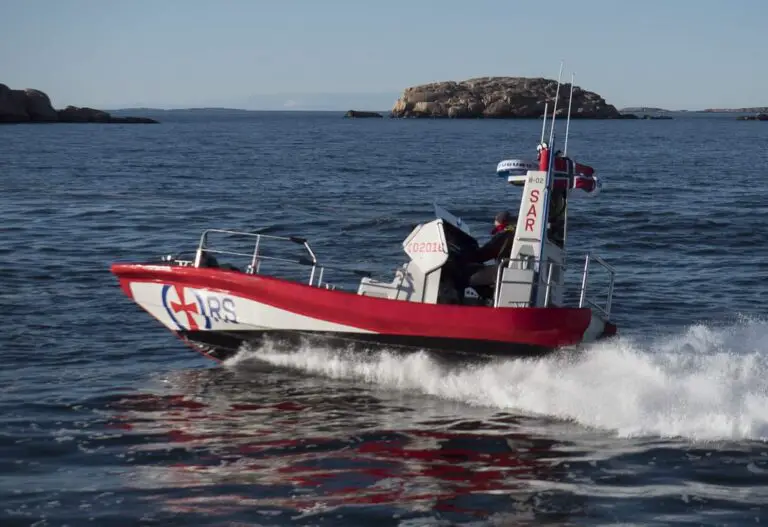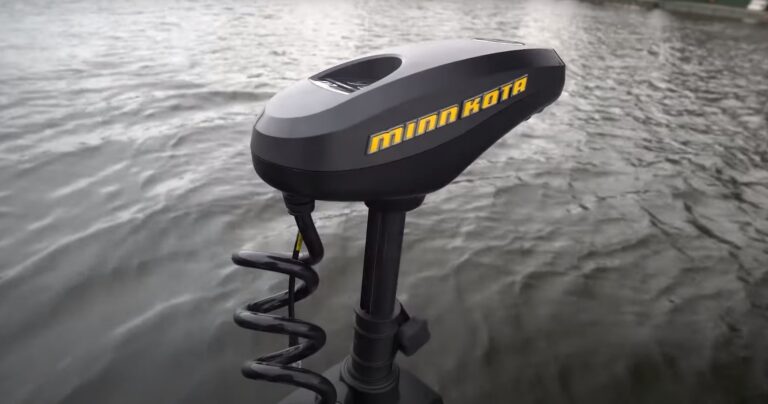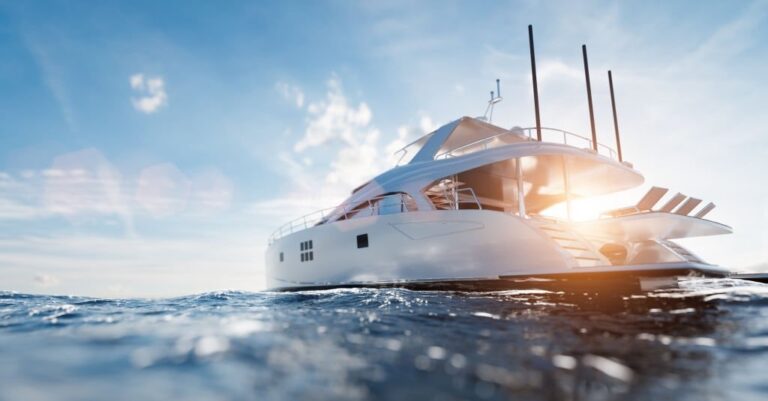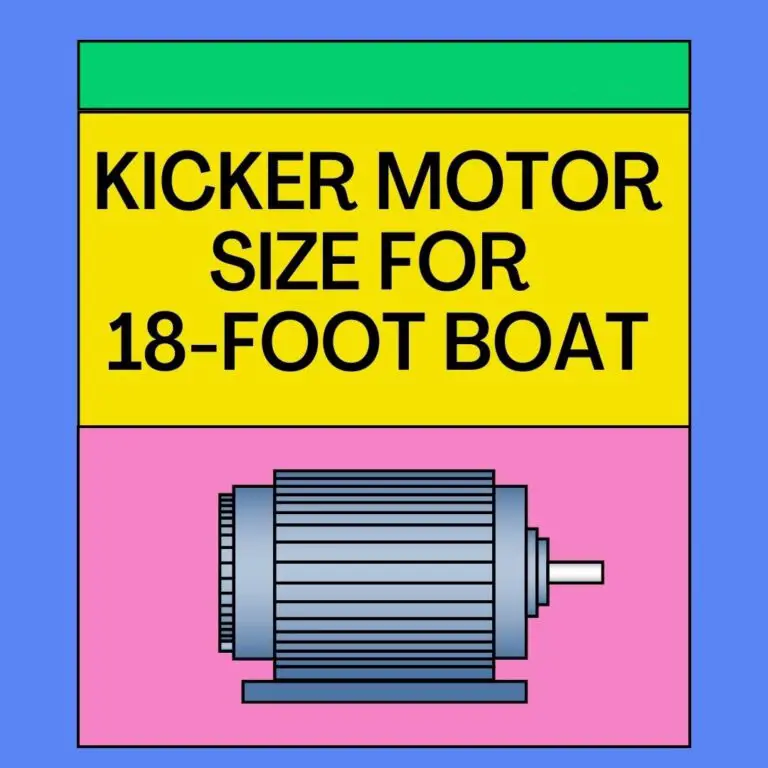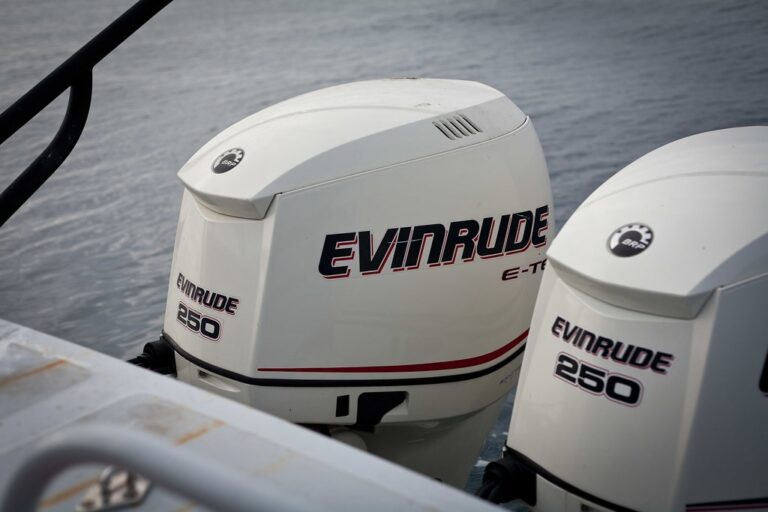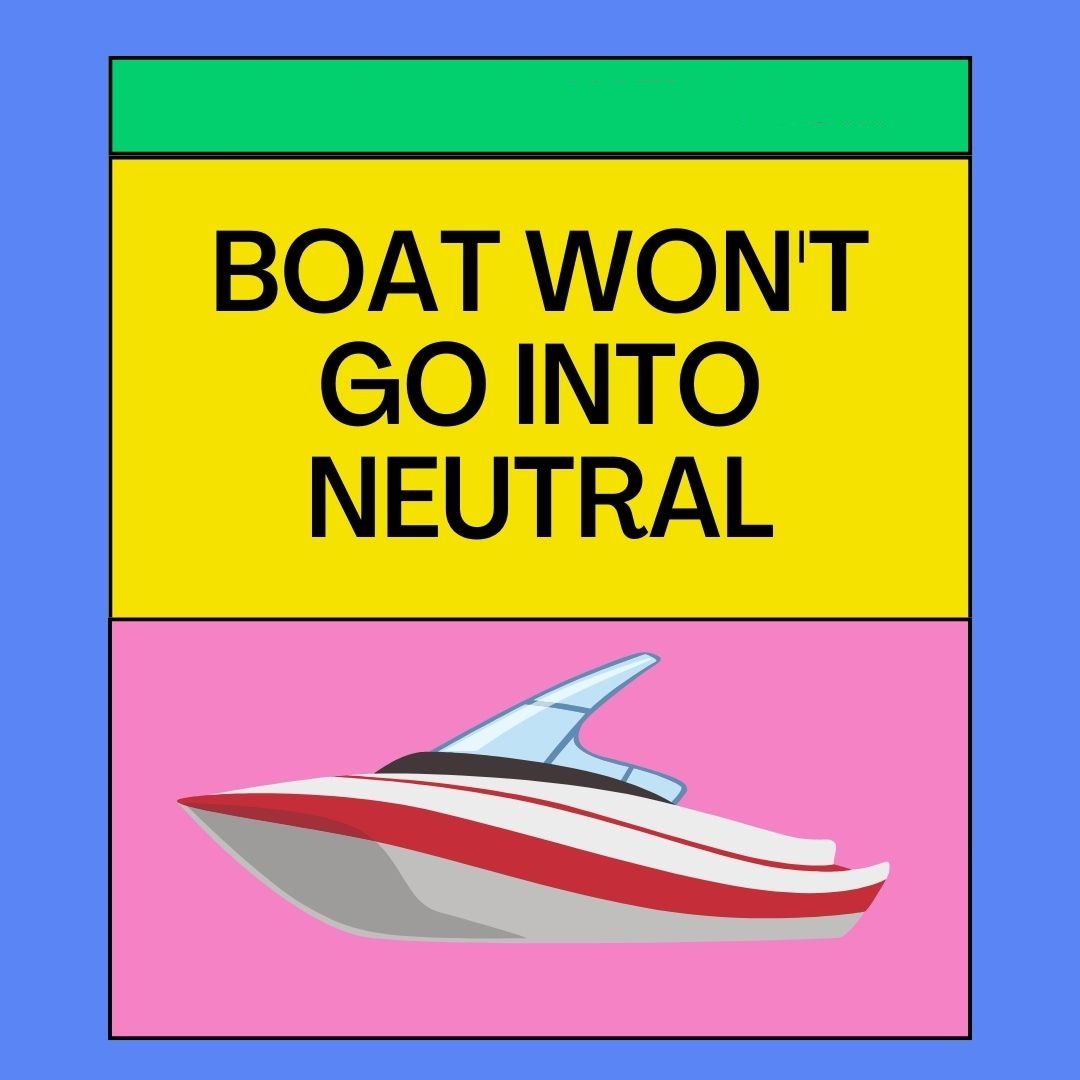
Driving a boat is a pretty fun activity. But that is only if everything is working perfectly. Issues with gear shifting can lead to major accidents.
So your boat won’t go into neutral?
There could be many issues that can cause your boat to not go into neutral. The shifter handle may be stuck and in need of replacement. The outward might be stuck in gear as well. But one of the most common problems is with shift interrupters.
This just names the problems. All of them have complex solutions. But you can read all about them right here!

Troubleshooting: Boat Won’t Go into Neutral
Troubleshooting the boat or the gear system should bring forth the boat shifting issues. So let’s see what are the probable causes of the boat shifting problems. And how to solve them.
Problem 1: Shifter in Tiller Handle Stuck in the Forward Gear
On occasion, the tiller’s built-in gearshift may get jammed in the forward position. In that case, my boat won’t go into neutral. And it also refused to shift into reverse.
The plastic lever component expanded, causing this.
Solution
Some shift linkages on tiller motors are too tight, causing the motor to jam. In this case, lubrication won’t make much of a difference. The bottom unit shift rod is attached to the plastic lever.
Because of swelling and binding, this plastic becomes rigid.
Step 1: Sanding
Initially, you should attempt to reduce the swelling by grinding or sanding down the affected areas. You may see whether the piece can be made to fit better by sanding it.
Sanding, on the other hand, does not always provide the desired results.
Step 2: Replacing the Shifting Arm
Sanding could help fix the issue. But if that does not work, you will need to replace the whole component. Investing in a replacement shifting arm ought to rectify the situation.
Problem 2: Outboard Stuck in Gear
Sometimes the outboard could simply be locked in gear for no apparent reason. There are three potential causes for this.
To begin, it can be because of a contaminant in the gear oil. Incorrect clamping between the lower and upper outboard might be one possible cause for this issue. This may also be caused by the linkage between the shifting rod and the shifting lever being jammed.
These problems continue to exist regardless of whether the gear is in the rest or forward position. In addition to this, the boat won’t go into neutral or reverse.
This might limit the speed of the boat as well. It might cause the boat to not go over 10 mph.
Solution
There are three possible complications. And they provide three different answers.
Step 1: Checking the Gear Oil
To begin, you have to examine the transmission oil to see whether it contains any contaminants, such as water. When there is, the gear oil has to be changed immediately.
Step 2: Removing the Rubber Plug
Possibly it wasn’t the gear grease after all. Get rid of the rubber stopper then. It’s on the thigh, above the joint, and next to the gearbox.
Check the shifting rod for wiggles when you move the gear’s shifter. Verify the bottom and top sections are securely clamped together.
Step 3: Solving Jam Between the Links
It’s likely that there’s a blockage between the connections. That is if you’ve tried everything else and nothing has worked. Check for a clog in the passageway between the shifting rod and the shifting lever.
With the two screws withdrawn from behind the tiny plate, this will be exposed. You can clear the obstruction if you discover it.
Use a cotton towel to wipe it down. After which you should lube it.
Problem 3: Issues with Shift Interrupter
The drive has a shift interrupt switch installed so that the operator may rapidly enter neutral. The shift interrupt button is included within the shift plate itself. Additionally known as the “kill switch” or “shift switch” by industry professionals.
Some of the motor’s screws may work their way loose after extensive usage. For the shift interrupter, this holds true as well.
Solution
The shifter interpreter requires three devices for debugging. tools like pliers, a screwdriver, and an open-end wrench will be required.
Step 1: Place the Water Muff
You should start by donning the water muff.
Assure that the water muffs are installed on both ends. Each side must fully enclose the water intake.
Also, ensure sure the bottom engine is in its downward-shifted position. This is a must for the survival of the motor. Now that you’ve finished here, you may go to the vehicle engine.
Hopefully, you should not face any issues with power pole troubleshooting.
Step 2: Check the Cable
The first step is to access the engine compartment and find the gear selector plate. Position it near the left valve cover or the exhaust elbow.
The shift cable should then be inspected to ensure it is in working order. Most of the time, the problem with the engine is due to a loose cable. Check the cable for rust, corrosion, or other damage.
The shift cable may have worn out or broken, in which case you should replace it. If the cable seems to be in fine condition, go on to the next section.
Step 3: Check the Shift Lever Stud
First, make sure the shift lever stud is properly positioned on the shift plate. Place it at the opening’s edge, close to the pivot.
The stud nut may be moved by loosening it with an open-end wrench. Once you’ve pushed the nut into position with your fingers, tighten it.
Step 4: Shift Propeller Shaft
To proceed with this phase, you’ll need the help of another individual. Instruct your helper to turn the propeller in a counterclockwise direction. Simultaneously, move the cable to full throttle using the controls in the driver’s compartment.
Maintain this motion until the propeller shaft stops turning. Once this occurs, complete clutch engagement has occurred. It’s because of this action that the shift cable is being drawn inward.
Step 5: Adjust the Barrel
Any slack in the cable may be taken up by pulling on the shifting cable guides. You need to loosen the lock nut holding the adjusting barrel in place. Take off the clevis pin with some pliers.
Don’t forget to keep an eye on both of them once you’ve taken them out. As a result of their little size, they are easily misplaced. Many people would rather use a brand new clevis pin than reuse the old one.
Once you’ve unbolted the brass adjusting barrel from the posts, you may take it apart. The barrel must be tightened by turning it until there is no play.
The barrel should be spun 4 times in a clockwise manner. Then, after you’re done, put it back on the mounting post. Follow that by resealing it with the clevis pin.
Step 6: Evaluate the Clutch
There will be another time when you need the help of your helper. The propeller may be stopped by having your helper rotate it counterclockwise until it stops spinning.
At the same time, you need to do the opposite and put the throttle in full open mode. This icon indicates that the clutch has been completely engaged.
If the clutch won’t engage, try taking off the protective cover from the controls. Then you need to locate the shift lever stud.
You should retry once you’ve loosened the stud using an open-end wrench. The wrench should have a tiny upward nudge within the slot. Turn the process backwards until the clutch clicks into place.
Step 7: Test It Out
As soon as you’ve finished adjusting the engine settings, go to the dashboard. Start the boat and move the gear shift to the neutral position.
Check the switch that prevents the engine from shifting. Centre the rollers or pusher just over the depression in the switch frame.
If the cable is displaced, check for wear and tear or a lack of tightness. After you’ve double-checked the cable, you should double-check the connections.
It’s possible that your cable become rigid due to the cold weather. If that’s the case, the steering cable has to be thawed. The condition of your wires as a whole should be satisfactory.
If you follow the above instructions, you should be able to successfully change the switch. If it doesn’t work, though, you should see an expert. You might also try getting in touch with the manufacturer for further information.
FAQs
Will a boat start in gear?
Prior to actually turning on the engine on most boats, you must put the gear into neutral. The boat’s engine won’t start if the gear is engaged, but everything else, including the lights and the instruments, will function normally.
What causes a boat not to plain out?
Possible causes of a boat’s inefficient planning include many different things. Overloading and improper weight distribution are the most typical causes. Improper outboard motor tilt is another common reason since it alters the hull’s angle in relation to the water’s surface.
What is vapor lock on a boat?
The condition known as vapor lock may occur if the gasoline in your carburetor or fuel line begins to boil. Fuel that has been vaporized results in the creation of back pressure in the fuel system, which stops gas from reaching the engine.
Conclusion
And with that, we know so much more about why boat won’t go into neutral. The problem can be caused by a few different reasons. And all of them are solvable.
Our article should have everything you need. But if the problem persists, visit a professional.
Good luck!

I’m Cindy, a free-spirited outdoor enthusiast. Since childhood, Our family frequently goes on weekend camps and my father, who was a skilled hunter, used to teach my siblings and me valuable things about wildlife survival. I made this blog to share my knowledge, experiences, and tips.

